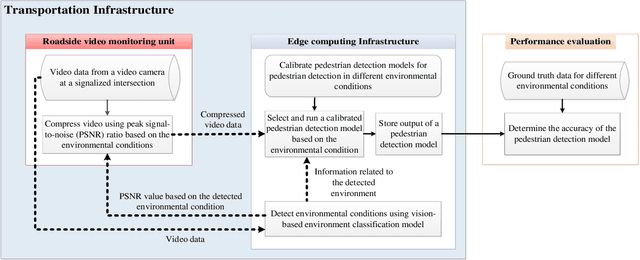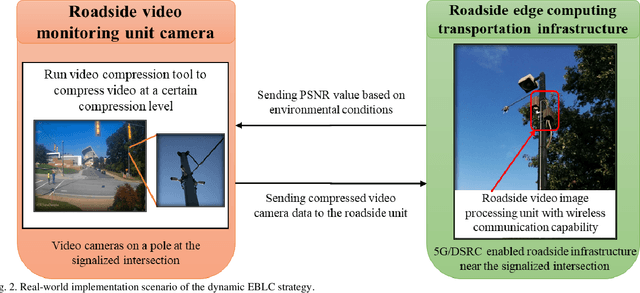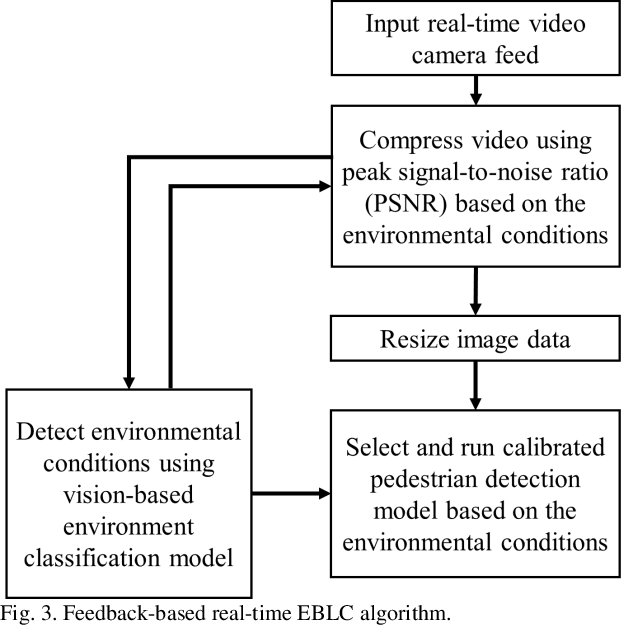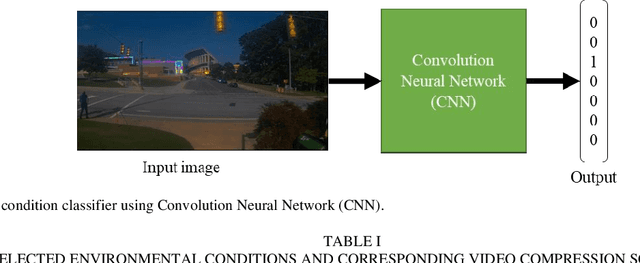Dynamic Error-bounded Lossy Compression (EBLC) to Reduce the Bandwidth Requirement for Real-time Vision-based Pedestrian Safety Applications
Paper and Code
Jan 29, 2020



As camera quality improves and their deployment moves to areas with limited bandwidth, communication bottlenecks can impair real-time constraints of an ITS application, such as video-based real-time pedestrian detection. Video compression reduces the bandwidth requirement to transmit the video but degrades the video quality. As the quality level of the video decreases, it results in the corresponding decreases in the accuracy of the vision-based pedestrian detection model. Furthermore, environmental conditions (e.g., rain and darkness) alter the compression ratio and can make maintaining a high pedestrian detection accuracy more difficult. The objective of this study is to develop a real-time error-bounded lossy compression (EBLC) strategy to dynamically change the video compression level depending on different environmental conditions in order to maintain a high pedestrian detection accuracy. We conduct a case study to show the efficacy of our dynamic EBLC strategy for real-time vision-based pedestrian detection under adverse environmental conditions. Our strategy selects the error tolerances dynamically for lossy compression that can maintain a high detection accuracy across a representative set of environmental conditions. Analyses reveal that our strategy increases pedestrian detection accuracy up to 14% and reduces the communication bandwidth up to 14x for adverse environmental conditions compared to the same conditions but without our dynamic EBLC strategy. Our dynamic EBLC strategy is independent of detection models and environmental conditions allowing other detection models and environmental conditions to be easily incorporated in our strategy.
 Add to Chrome
Add to Chrome Add to Firefox
Add to Firefox Add to Edge
Add to Edge